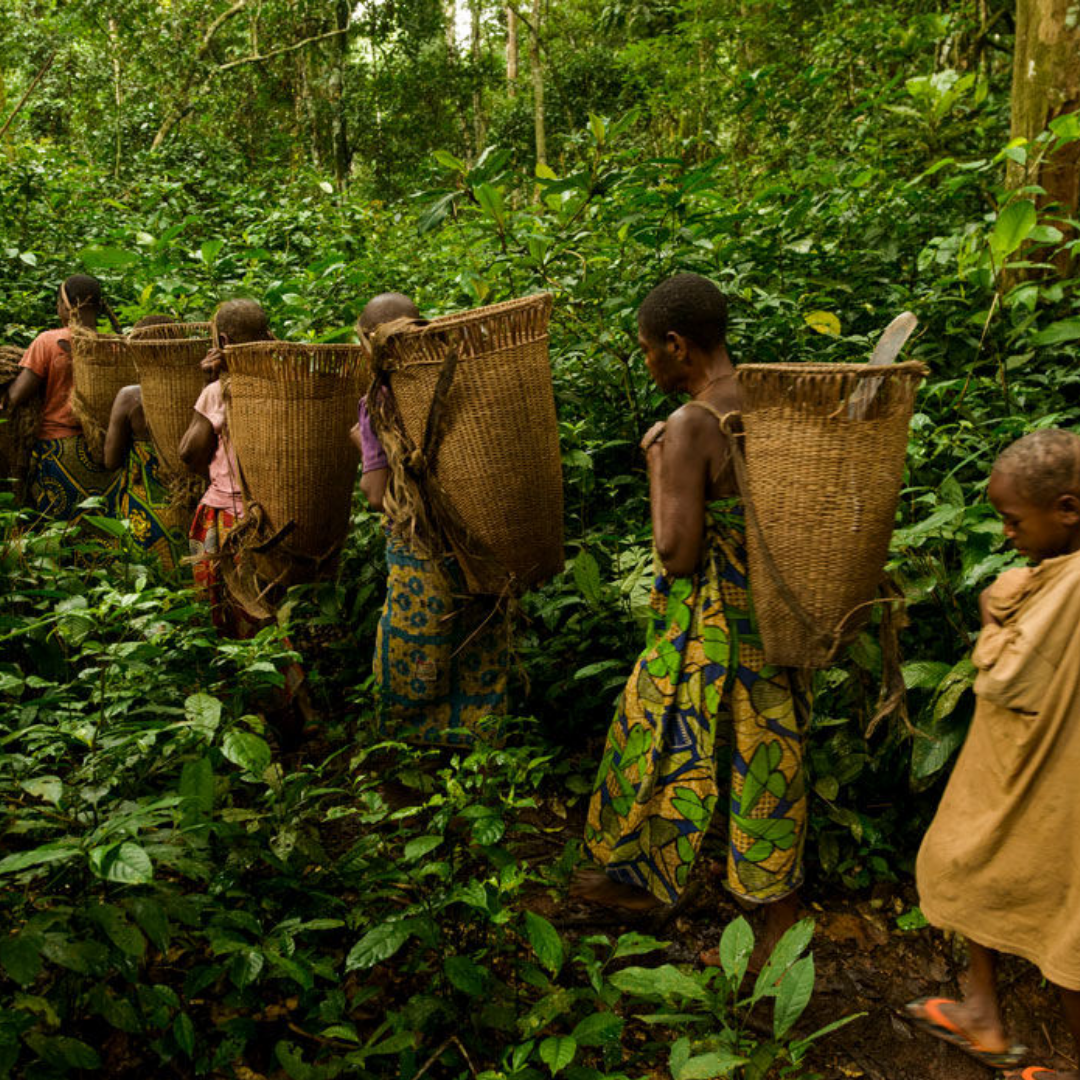Hunter-Gatherer Transition: The Dawn of Sedentary Civilization
The hunter-gatherer lifestyle: humanity’s original state
For approximately 99 % of human existence, our ancestors live as hunter-gatherers. These nomadic peoples follow seasonal food sources, hunt wild game, and gather edible plants to sustain themselves. This lifestyle requires extensive knowledge of local environments, constant mobility, and comparatively small population groups.
Hunter-gatherer societies typically organize into bands of 20 50 individuals, commonly extend family groups. Their material possessions remain minimal by necessity, as they need to relocate oftentimes. Despite these constraints, archaeological evidence show these early humans develop sophisticated tools, artistic traditions, and complex social structures.
Seeds of change: why humans begin to settle land
The transition from nomadic hunter-gatherer lifestyles to sedentary settlements represent one of the virtually profound shifts in human history. This change didn’t happen all night or uniformly across the globe. Alternatively, it emerges severally in multiple regions over thousands of years, begin approximately 12,000 yearsalonee.
Several key factors contribute to this momentous transition:
Climate change after the last ice age
As the last ice age end, earth’s climate stabilize and warm. This climatic shift create more favorable conditions for plant growth in many regions. In the fertile crescent (span modern day iIraq sSyria lLebanon iIsrael and jJordan) wild cereals like wheat and barley flourish in the new climate conditions.
This environmental change provides an opportunity for humans to interact otherwise with their surroundings. Instead than follow food sources, people could progressively rely on abundant wild plant foods in specific locations.
Population pressure and resource concentration
Archaeological evidence suggest population growth may have place pressure on traditional hunter-gatherer subsistence strategies. As human groups expand, the virtually desirable territories become crowded, force people to extract more resources from smaller areas.
Simultaneously, certain regions experience natural concentrations of resources. Areas with reliable water sources, abundant wild cereals, and diverse plant and animal species become progressively attractive for extended stays.
Technological innovations
The development of new tools and techniques allow humans to harvest, process, and store wild plant foods more expeditiously. Stone mortars and pestles for grind grains, baskets for collect seeds, and early storage pits all facilitate farseeing stay in resource rich areas.
These technological adaptations didn’t instantly lead to agriculture but create conditions where experiment with plant cultivation become possible.
The agricultural revolution: cultivate a new way of life
The virtually significant catalyst for sedentary living come through the domestication of plants and animals — a process archaeologists call the neolithic revolution or agricultural revolution.
Early plant domestication
The earliest evidence of plant domestication appear in the fertile crescent around 10,000 BCE. Here, communities began selectively harvest and plant wild wheat and barley varieties. Over generations, this selection process leads to domesticate crops with desirable traits like larger seeds andnon-shatteringg seed heads( prevent seeds from disperse course).
Similar independent domestication events occur in other regions:
- East Asia: rice and millet domestication by 7000 BCE
- Mesoamerica: corn (maize ) beans, and squash by 7000 bcBCE
- South America: potatoes and quinoa by 5000 BCE
- Africa: sorghum and yams by 4000 BCE
These domesticate crops provide more reliable food sources than wild plants, encourage people to remain near their cultivate fields.
Animal domestication
The domestication of animals follow a similar pattern. Dogs were probable the first domesticate animals, partner with humans as hunt companions axerophthol betimes as 15,000 years alone. Later domestication include:
- Sheep and goats: about 8000 BCE in the fertile crescent
- Cattle: by 6500 BCE in multiple locations
- Pigs: by 7000 BCE in the near east and china
Domesticate animals provide reliable sources of meat, milk, fibers, and labor. They besides produce muck that enhance soil fertility for crops, create a synergistic relationship between plant and animal domestication.
The feedback loop of settlement
As communities invest time and energy in cultivate crops and raise animals, they became progressively tie to specific locations. This creates a powerful feedback loop:
- Initial agriculture lead to semi-permanent settlements
- Settlements allow for food storage and population growth
- Larger populations require more food production
- Increase food needs lead to agricultural intensification
- Agricultural investment interchange commit people to sedentary living
This cycle transform human relationships with the environment and with each other.
The first settlements: from camps to villages
The archaeological record reveal how human settlements evolve from temporary camps to permanent villages over thousands of years.

Source: unionkitchen.com
Semi-permanent settlements
The earliest evidence of semi-permanent settlements predate full scale agriculture. Sites like halo ii in iIsrael((3,000 years old ))how hunhunter-gathererstablish longer term camps near abundant wild resources. These settlements typically feature simple shelters and grind tools for process wild grains.
Belated sites like Abu Purana in sSyriademonstrate communities that combine hunting and gather with early cultivation. These transitional settlements show people experiment with new subsistence strategies while maintain aspects of mobile lifestyles.
Early agricultural villages
The first true agricultural villages emerge around 9,000 8,000 BCE. Sites like Jericho in the Jordan valley and Çatalhöyük in Turkey represent amply sedentary communities build around farming and herding.
These early villages display several key characteristics:

Source: arstechnica.com
- Permanent architecture: mud brick or stone houses build for long term occupation
- Food storage facilities: granaries and storage pits for preserve harvests
- Community space: areas for share activities and social gatherings
- Cemeteries: dedicated burial grounds indicate territorial attachment
- Craft specialization: evidence of pottery, weaving, and tool production
The archaeological site of Çatalhöyük provide peculiarly vivid insights into early village life. This thickly pack settlement house upwards to 8,000 people in adjoining houses access through roof entrances. Its elaborate wall paintings, figurines, and burial practices reveal a rich symbolic life center around agricultural themes.
Social transformations: reorganize human society
The shift to sedentary living deeply transform social organization, create new opportunities and challenges for human communities.
Population growth and density
Sedentary agricultural communities could support importantly larger populations than hunter-gatherer bands. Women in farming societies typically have more children than their nomadic counterparts for several reasons:
- Reduced mobility make childcare less taxing
- Soft, process foods allow betimes weaning
- Children could contribute to agricultural labor from a young age
This population growth lead to unprecedented population densities. While hunter-gatherer territories might support one person per square mile, early farming villages could sustain hundreds of people in the same area.
Property and inheritance
Sedentary living introduce new concepts of property ownership. Unlike mobile hunter-gatherers, farmers invest substantial labor in specific land parcels, create incentives to claim exclusive rights to fields, orchards, and pastures.
The ability to accumulate material possessions — houses, tools, livestock, store food — create wealth disparities antecedent rare in huhunter-gathererocieties. These resources could be pass down through generations, establish inheritance patterns that reinforce social stratification.
Social complexity and specialization
As settlements grow larger, social organization become more complex. Early villages show evidence of:
- Occupational specialization: dedicated craftspeople, traders, and religious practitioners
- Leadership roles: emerge elite groups who coordinate community activities
- Collective projects: irrigation systems, defensive walls, and monumental structures require organize labor
These developments lay the groundwork for the emergence of social hierarchies, political institutions, and finally state level societies.
Change gender roles
The transition to agriculture probable shift gender roles and relations. In many agricultural societies, men typically perform field labor while women manage domestic production, include food processing, textile manufacturing, and childcare.
Archaeological evidence suggest women’s status may have decline in some early agricultural societies compare to more egalitarian hunter-gatherer groups. Nevertheless, this pattern varies substantially across cultures and time periods.
The health paradox: biological impacts of sedentism
Contrary to popular assumptions, the transition to agriculture didn’t now improve human health. Bioarchaeological studies of human remains reveal several negative health consequences of early sedentary living:
Nutritional challenges
Early farmers typically rely on a narrower range of foods than hunter-gatherers. While hunter-gatherers might consume dozens or eve hundreds of different plant and animal species, farmers oftentimes depend intemperately on a few staple crops. This dietary narrowing lead to nutritional deficiencies and reduce stature in many early agricultural populations.
Skeletal evidence show early farmers oftentimes suffer from anemia, dental problems, and growth disruptions indicative of periodic malnutrition.
Infectious disease
Sedentary villages create ideal conditions for the spread of infectious diseases. Several factors contribute to this problem:
- Population density bring people into closer contact
- Poor sanitation in early settlements
- Proximity to domesticate animals, which serve as disease reservoirs
- Contaminate water sources
Diseases like tuberculosis, malaria, and various parasitic infections become more prevalent in settle communities.
Labor stresses
Agricultural work impose different physical demands than hunt and gathering. Skeletal remain from early farming communities show distinctive patterns of arthritis and bone modifications relate to repetitive agricultural tasks like grind grain and tilling fields.
Despite these challenges, agricultural populations continue to grow, finally outcompete hunter-gatherer groups in most regions. The ability to produce more food per unit of land, eve at the cost of individual health, prove evolutionarily advantageous.
The legacy of the transition: foundations of complex civilization
The shift from mobile hunter-gatherer bands to sedentary agricultural communities lay the essential foundations for complex civilizations. Several key developments flow forthwith from this transition:
Surplus production and trade
Settle agricultural communities could produce food surpluses beyond immediate subsistence needs. These surpluses enable:
- Support for non-food produce specialists
- Trade networks for exchange goods between regions
- Investment in monumental architecture and public works
- Development of storage and accounting systems
Archaeological evidence for long distance trade networks appear betimes in the history of sedentary communities, with materials like obsidian, shells, and semi-precious stones move hundreds of miles from their sources.
Technological innovation
Sedentary living accelerate technological development in multiple domains:
- Pottery: permanent settlements make heavy, breakable ceramic vessels practical for cooking and storage
- Metallurgy: fix locations allow for the development of smelting technologies
- Textile production: looms and spinning tools evolve for process domesticate fibers
- Architecture: building techniques advance from simple shelters to complex structures
These technological developments create feedback loops that far reinforce sedentary lifestyles.
Writing and record keeping
The earliest writing systems emerge instantly from the needs of complex agricultural societies. In Mesopotamia, the first know writing appear around 3200 BCE as administrative records track agricultural products, land ownership, and trade goods.
Similar developments occur severally in Egypt, china, and Mesoamerica, where early scripts serve principally economic and administrative functions before evolve to record historical events, religious texts, and literature.
Urban centers and state formation
By 4000 3000 BCE, some agricultural villages had grown into the world’s first cities. These urban centers feature unprecedented population densities, monumental architecture, and complex social institutions.
The emergence of state level political organization — with centralized authority, specialized administrative staff, and formal legal codes — build instantly on the social foundations establish during the transition to sedentary agricultural life.
Persistent hunter-gatherers: alternative pathways
While agriculture and sedentary living finally become dominant universal, this transition wasn’t universal or inevitable. Some hunter-gatherer societies persist with mobile lifestyles comfortably into modern times, peculiarly in environments less suitable for early farming:
- Arctic regions: Inuit peoples maintain hunting base economies until lately
- Arid deserts: groups like the san of Southern Africa develop specialized adaptations to desert environments
- Tropical rainforests: peoples like the MBTI of cCentral Africathrive through forest base hunting and gathering
- Marine environments: coastal peoples oftentimes combine fish with seasonal mobility
These persistent hunter-gatherer societies demonstrate that sedentary agriculture represent one successful human adaptation among many, not an inevitable evolutionary endpoint.
Some groups besides develop intermediate strategies, combine elements of hunting, gathering, horticulture, and pastoralist. These diverse subsistence patterns remind us that the transition from hunter-gatherer to farmer wasn’t a simple, linear process but a complex spectrum of adaptations to different environmental and social conditions.
Conclusion: a transformation that shape our world
The transition from mobile hunter-gatherer bands to sedentary agricultural communities represent one of history’s virtually profound transformations. This shift essentially alters human relationships with the environment, social organization, and technological development.
While oftentimes describe as the” neolithic revolution, ” his process unfold gradually over thousands of years through countless individual decisions and adaptations. Early farmers didn’t envision create cities, states, or civilizations — they merely seek secure food sources in change environments.
Yet the cumulative effects of these adaptations prove revolutionary. The capacity to produce food surpluses, support specialized labor, accumulate property, and develop complex social institutions lay the essential groundwork for all subsequent human history.
Today, as we face unprecedented global challenges relate to food production, population growth, and environmental change, understand this pivotal transition offer valuable perspectives. The story of how humans become sedentary remind us that our current way of life emerge lately in human history and that alternative relationships with our environment remain possible.



